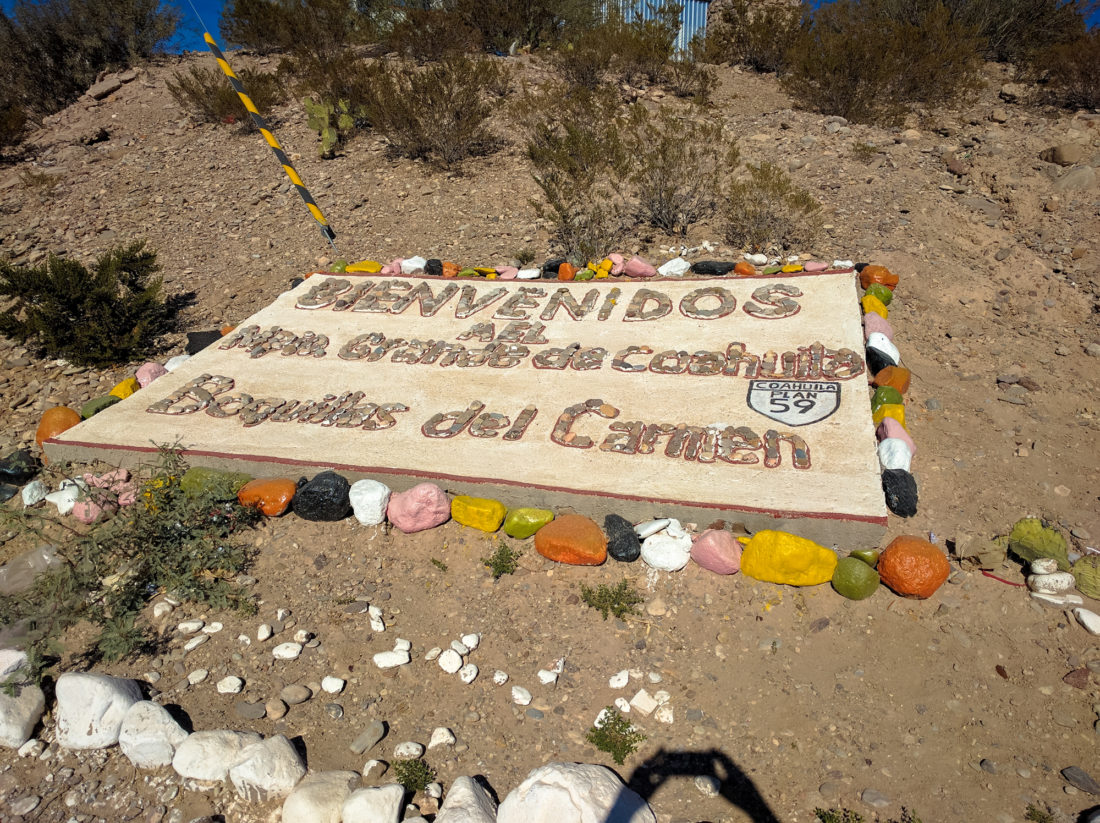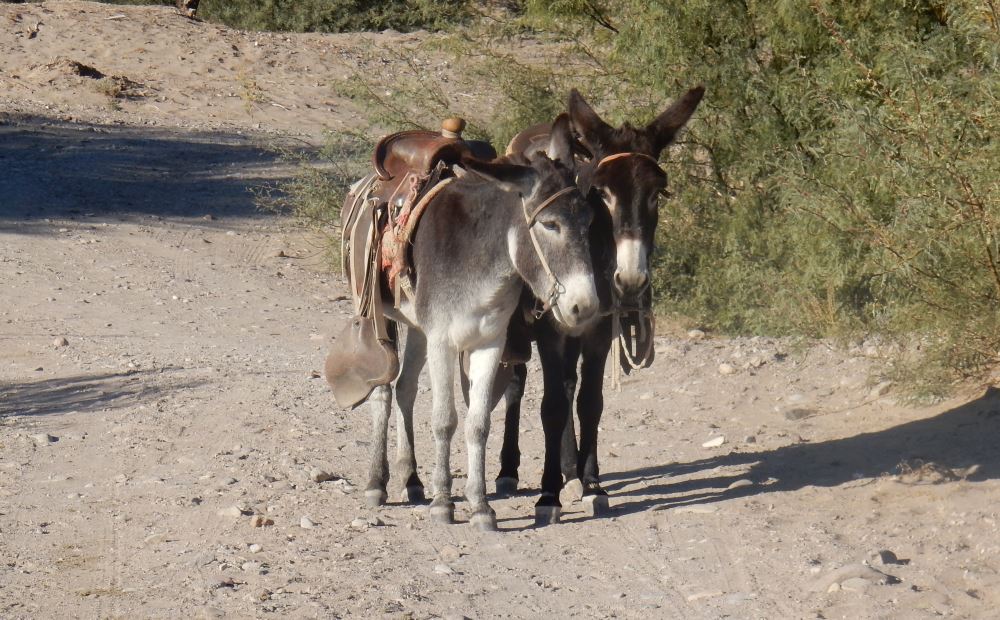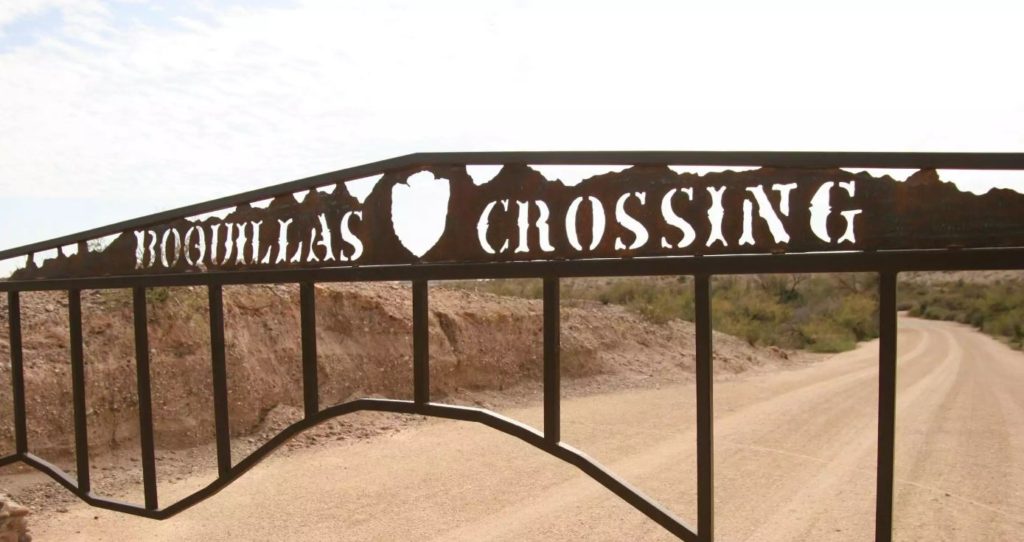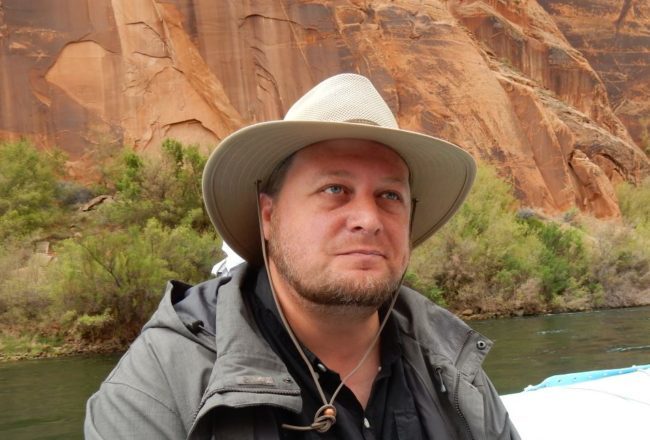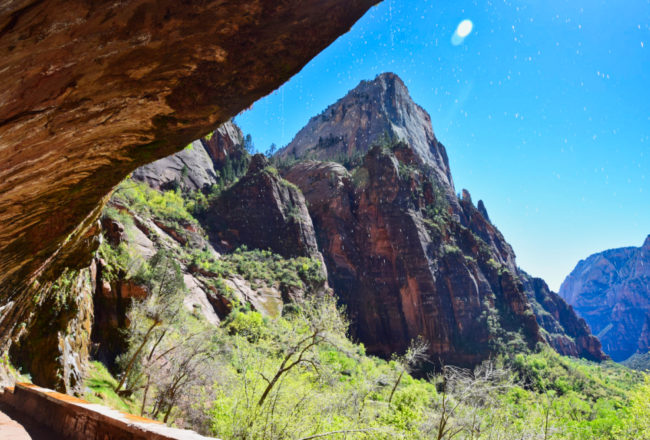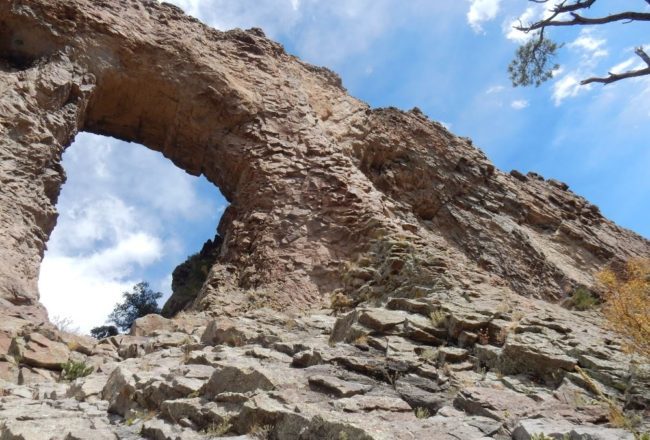While at Big Bend National Park I made some noises about wanting to cross over into Mexico at least once just. I also wanted a taco. Of course, I’d love to go for a longer visit but our beloved kitty cats; Kia and Kekovar, are something of an obstacle to international travel. Getting them cleared to cross over would require some vet visits, some payments, and a fair bit of paperwork. Thus, for now, it’s day trips only to Canada and Mexico.
A little history
Fortunately for us, Big Bend has a fairly unique opportunity for visiting Mexico in the village of Boquillas del Carmen. Back in the 1930’s, there was a US-Mexico effort to improve relations between the two countries who had a troubled past mostly owing to the US taking a lot of their territory in war. They decided to try and create a peace park, which would take the form of a continuous national park spanning the border of Texas and Mexico. The peace park never really came together. The US side did become Big Bend National Park but over on the Mexican side, it was pretty much a park in name only and little effort was made in preserving the landscape or wildlife.
The village of Boquillas del Carmen none the less came into being on the Mexico side and made a modest living from American tourists visiting the park on the US side, and then crossing over the Rio Grande to visit their small town. All that came to screeching halt after 9/11 and US visitors were prohibited from crossing there. The village shrank down to about 30 families and most of the business catering to tourists shut down. It was not until 2012 that the US re-opened the border crossing and life began to return to Boquillas del Carmen.
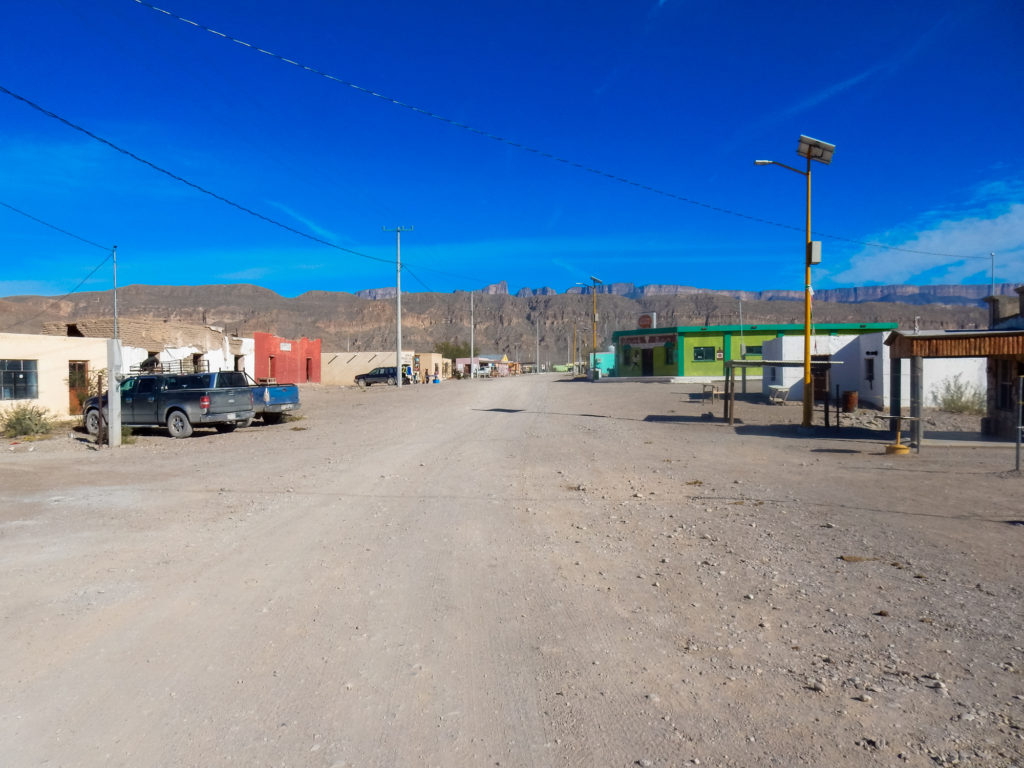
Boquillas, Mexico. This is main street in the town. The electricity is a new thing and the green building is the main store in town.
Getting there
We didn’t do our research when heading to Boquillas. All we knew is there was a border crossing to a town in Mexico. I pictured one of those drive-through border crossings you see in the films or find on highways into Canada. I also imagined various businesses catering to American tourists in what I imagined to be a sleepy but roughly modern town. None of this was the case. While we had our passports with us, we were otherwise unprepared.
The Crossing is really just parking lot and a customs station on the US side run by homeland security. You cannot drive through, you must park and then walk through. You will need a passport and they will give you a breakdown of the rules of what you can bring through and what you can’t. Most of the focus is on not bringing back any animals, vegetables, or minerals local to the area as well as no booze or drugs. They also let you know that you will need to bring cash as there are no ATMs on the Mexican side and they don’t take credit cards anywhere.
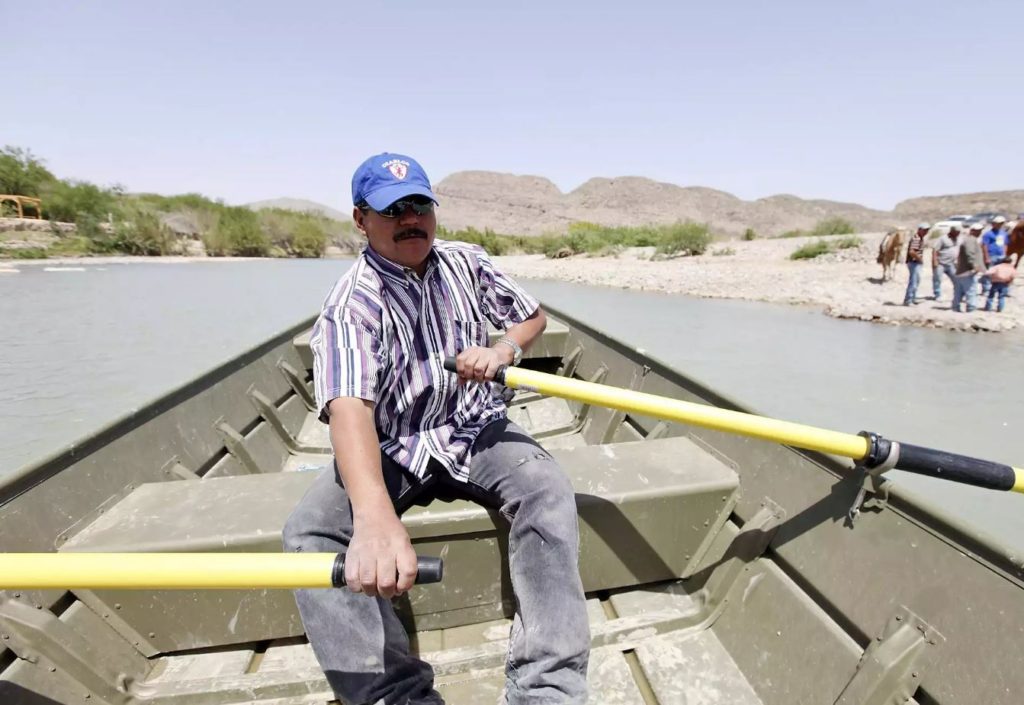
Here is our boatman. I think he’s also essentially in charge of the guides and transportation efforts in the town.
After you pass through you will need to cross the Rio Grande. Your choices are to pay a gentleman to take you over in a rowboat, or to walk/swim across on your own. The boatman only takes cash. Same goes for everyone in the village of Boquillas so you will need to bring enough to pay for everyone’s crossing and whatever you intend to spend while there. Once across the river, you must make a short Journey to the village itself. You can either walk about a mile on a dusty road, hire a truck to take you or hire a mule/horse to carry you. While making these arrangements you can also employ a local as a guide to show you around at an hourly rate. Again, all cash, all in US dollars. The prices are not very steep. We paid $5 per head for the river crossing and decided to walk to the village.
Once you arrive you will need to check in with officials on their side. The woman we were directed to didn’t speak any English and asked us questions in Spanish that we couldn’t answer. We filled out some paperwork and given a stamp. We had been told there would be a fee by the US officials, but we were not asked to pay anything in the Village.
What you will find there
Boquillas is a very small town of about 200 residents. Nearly all the houses are one story adobe dwellings and you can walk from one end of the town to the other in about 15 minutes. Many of the houses are painted in bright colors which look pretty from a distance. Nearly everyone you are likely to see in Boquillas is going to try and sell you something. They are not pushy, but everywhere in town the locals have set up little tables where they offer three things.
- Cloth banners with images painted on them, either religious, cartoon characters, or Mexican flags
- Agave Stalks that are painted with snakes or other colorful designs that make great walking sticks
- Little animal figurines sculpted from wire and glass beads
All of these crafts seem to either come from the same makers, or the village residents have all decided that these three things, in these particular styles, are the ultimate desire of your typical American tourist. Each is clearly hand made, but the style and subject matter is remarkably consistent. We were told on the US side that all these items were fine to bring back unless any stones were used in the figurines. We were also told not by buy painted stones but I didn’t see any for sale. We didn’t buy anything since we just don’t have room for novelties in the trailer but I did hand out quarters to small children who tried to ply me with these goods.
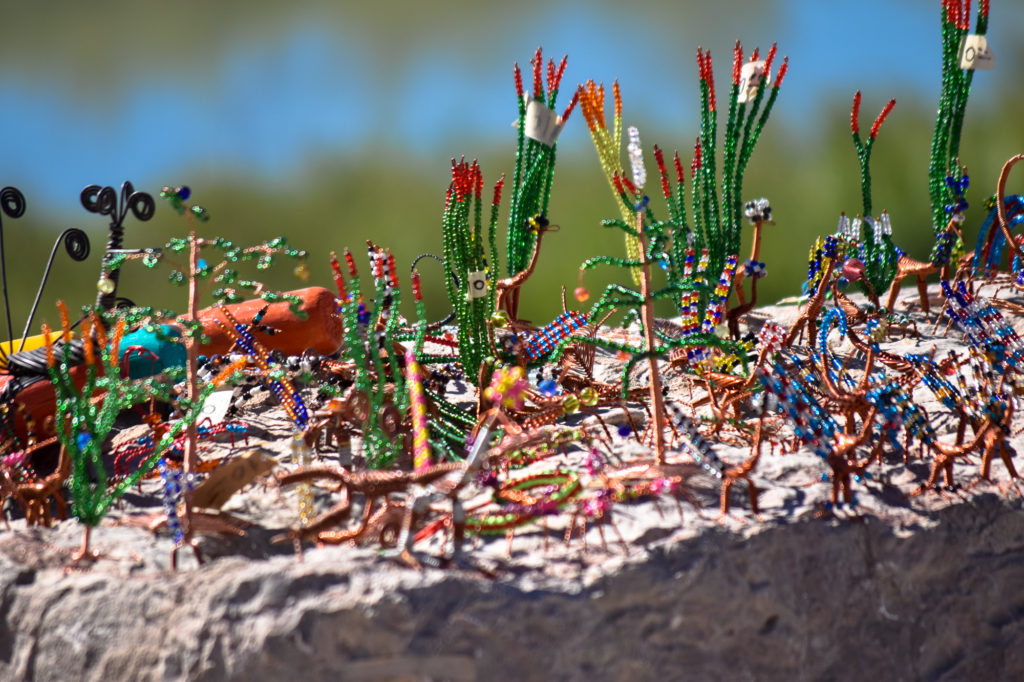
Here are some of the wire figures. These were actually on display inside the park with a tip jar so you can pay. It is actually illegal to buy these on the US side but that doesn’t seem to be strictly enforced.
There were a few businesses on what could best be called main street. The was a kind of internet cafe for the locals where we observed Mexican police or military with automatic rifles. There were a few restaurants, only two of which were open, and a bar or two that looked to be shuttered more or less permanently. Also a liquor store and possibly general store. One of the restaurants also served as an inn and had a gift shop that was selling more typical Mexican objects de-art. As of 2015, the Village has electric power through a nearby solar plant. Prior to that, it was generator only.
Notable non-commercial buildings include a single classroom school and the local church. Both have a lot of rustic charm to them with the church appearing to be one of the older buildings in town. I’ve come to appreciate than in many towns in the southwest, visiting the local historic Catholic church is almost always worthwhile and it was probably the most interesting single location in the town.
Most of the residents here do not speak English despite the prevalence of the tourist trade. The boatmen, some of the guides, and the owner of the restaurant we ate at were the only exceptions we encountered.
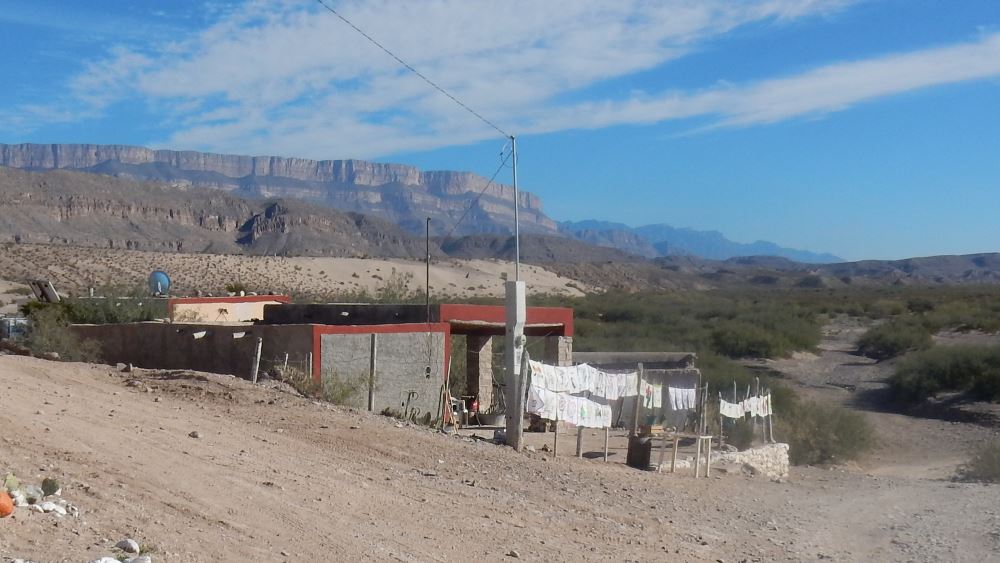
The landscape here is both beautiful and desolate. This shows some of the painted banners they sell everywhere in town.
Authentic Mexican food achieved
I like Mexican food, or at least I like some of what passes for Mexican food in the US. At least 90% of the Mexican restaurants I visit claim that they offer “authentic Mexican food” and I’ve always been highly dubious of those claims, especially after tasting them. So here I was with the opportunity to finally discover what was or was not “authentic.” I picked the larger of the two restaurants, the one with the inn and gift shop. It also had the distinction of having a nice patio where you could eat and look out over the Rio Grande.
I ordered a plate of red chili enchiladas which came with beans and rice. I spent a while reading the menu which had information about the history of the town. I asked our server about the history of the restaurant. It turned out she was actually its owner. She’d inherited it from her mother who ran it for some 30 years. It had shut down when the border was closed but her daughter had reopened it in the last few years. She claimed that the recipes they used were her mothers. I hadn’t asked, but this convinced me my meal would indeed be authentic Mexican food.
I was not disappointing. While it was not the best enchilada I’ve ever had, it was definitely in the upper echelon. The sauce was very nice and the chicken tasted fresh. It included some cotija cheese crumbled on top, though not a whole lot of it. All in all, it had a bright chili flavor with a little bit of heat. Great stuff. The beans were simple but good, and the rice was very soft with large grains, clearly cooked in a seasoned broth. Trail ordered tortilla chips and salsa as she just wasn’t very hungry. Both were clearly hand made. The salsa had a real kick and tasted super fresh. The chips were pretty thick and not all that great so far as corn chips go.
Based on this experience I’d say the Authenticity of most Mexican restaurants in the US is pretty suspect, but definitely not all. I’ve had some very similar enchiladas in a number of restaurants throughout the US. The most common departure is the use of cheddar cheese. Next up would be the enchilada sauce which gets sweetened in some Americanized restaurants. In total, and for enchiladas, I’d say the differences are not vast and for enjoyment, quality of ingredients and care in preparation matter more than Authenticity but I’m happy to have a standard for comparison now.
Wrapping up
If you visit Boquillas, you want to keep track of the time and get back before they US border crossing closes. Otherwise, you are going to have to stay at the inn on the Mexico side. We managed to get back with a bit of time to spare. The return boat ride is free. Curiously the return screening is done by videophone rather than by the official manning the border crossing. “Are you an American,” and “Did you bring anything back” were the only questions they asked us.
We had a very nice time exploring the village and trying out the food. I’d recommend it to anyone visiting the park or wanting to see a very rural version of Mexico. Just remember to bring some cash and don’t drink the water as it can make you sick if you aren’t used to it.
